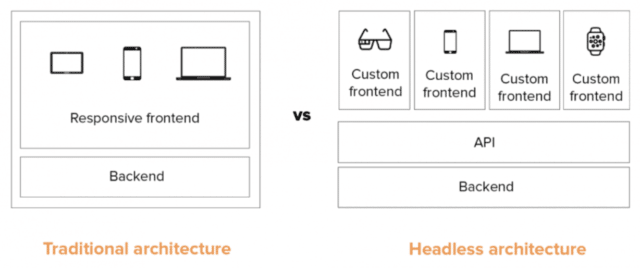Ecommerce now represents a 19.3% share of all retail sales in Australia, according to Australia Post’s 2022 Ecommerce Industry report. Lockdowns and pandemic-related effects accelerated Australia’s already-growing online shopping habits. And while the rate of growth is stabilising (with a 2021 online purchase volume YOY growth of 6.4% compared to the incredible 52.2% seen in 2020 and 17.8% in 2019), consumers intend to retain their new digital-first habits. 93% of respondents said they’d maintain or increase their online shopping activity in 2022.
The future of the online retail industry is bright, but as online sales continue to grow, so do shopper expectations. Pre-pandemic, having an online presence enabled retailers to attract and retain customers. As consumers flocked online throughout COVID-19, however, a clear point of difference became a new challenge for online retailers. To create this differentiator, start with your underlying technology.
What Is an Ecommerce Tech Stack?
An ecommerce technology stack is the framework of platforms, apps, programming, and tools used to build, manage, and enhance a website and its connected services. It’s how your digital tools combine to create a complete system that drives enhanced online shopping experiences.
What’s in a Tech Stack?
An ecommerce tech stack has several layers.. These highly technical components include the front-end (e.g. CSS, HTML and JavaScript) and back-end (e.g. databases, storage, and servers) that more or less determines how your website looks, functions, and behaves.
At the core is your ecommerce platform, such as Shopify, BigCommerce, Miva, and Adobe Magento. Many modern platforms make ecommerce site management much more accessible (without knowing a degree in technical jargon) and include templates, SEO, and marketing tools. These platforms are often connected to back-end business systems such as accounting and inventory systems or ERP (enterprise resource planning) software in larger organisations. Additionally, headless ecommerce platforms can decouple front-end layers from back-end ecommerce functionality. This gives online retailers much greater flexibility to create unique, personalised experiences for shoppers on the front-end while keeping back-end functionality running smoothly.

Surrounding your ecommerce platform are various tools to enhance the customer experience at every touchpoint. From product discovery to post-purchase service and analysis, a carefully-selected ecommerce tech stack can improve each step of the customer journey.
Considerations for a Globally-Capable Technology
When planning your complete tech stack, it’s critical to consider both short-term and long-term needs, including:
Budget
What total budget do you currently have available to invest in your technology? And how is that likely to change in the future? Also, consider the ROI (return on investment) of each item in your tech stack. For example, should you set more funding aside for applications that can significantly boost conversions and generate additional revenue?
Scalability
The technology you’re considering may be perfect for your online store, but will it support your business as it grows? Are there limitations or pricing tiers based on transaction or activity volumes that you’ll need to account for as you scale?
Usability
As your team grows, the usability of your ecommerce solutions becomes increasingly crucial. The faster new team members can pick up and run with a solution within your ecommerce tech stack, the greater productivity and value you can gain from it.
Customer Impact
How will each part of your tech stack work together to enhance the shopper experience? Live chat or customer service applications obviously affect the customer experience. But what about technologies that can speed up your website or personalise the on-site shopper experience? Spend adequate time thinking through all outcomes of how the technology will impact the customer journey.
Integration and Partnerships
When investigating solutions for your tech stack, consider the integration and partnership network of each application. Do they offer a seamless way to build a best-of-breed tech stack? For example, when looking at a search, merchandising, and recommendations platform, does it have partnerships with customer service applications, reviews platforms, and other solutions essential to your tech stack?
Long-Term Value
Will the technology continue providing value into the future? Look at each application’s track record, future roadmap, and commitment to continuous development to understand the potential longevity of your investment – and the extended value you may be able to realise over time. Sites like G2 also provide user scoring and feedback to understand the value other organisations have gained from ecommerce and other applications. Check out the Searchspring scores and feedback as one example.
Experience
Review ratings and feedback can give you a good understanding of the supplier’s experience in supporting similar globally-focused businesses. But also check their customer success stories to see how they’ve supported similar organisations through their ecommerce growth journey.
Continue to Part 2 of Choosing Your Ecommerce Solutions for Global Growth.
Click here to see part 2 of this blog series, which explores building your ecommerce solutions around the customer experience
Book your tailored demo of Searchspring to see first-hand how search, merchandising and personalisation delivers the ultimate shopper experience to support your global business growth goals.




